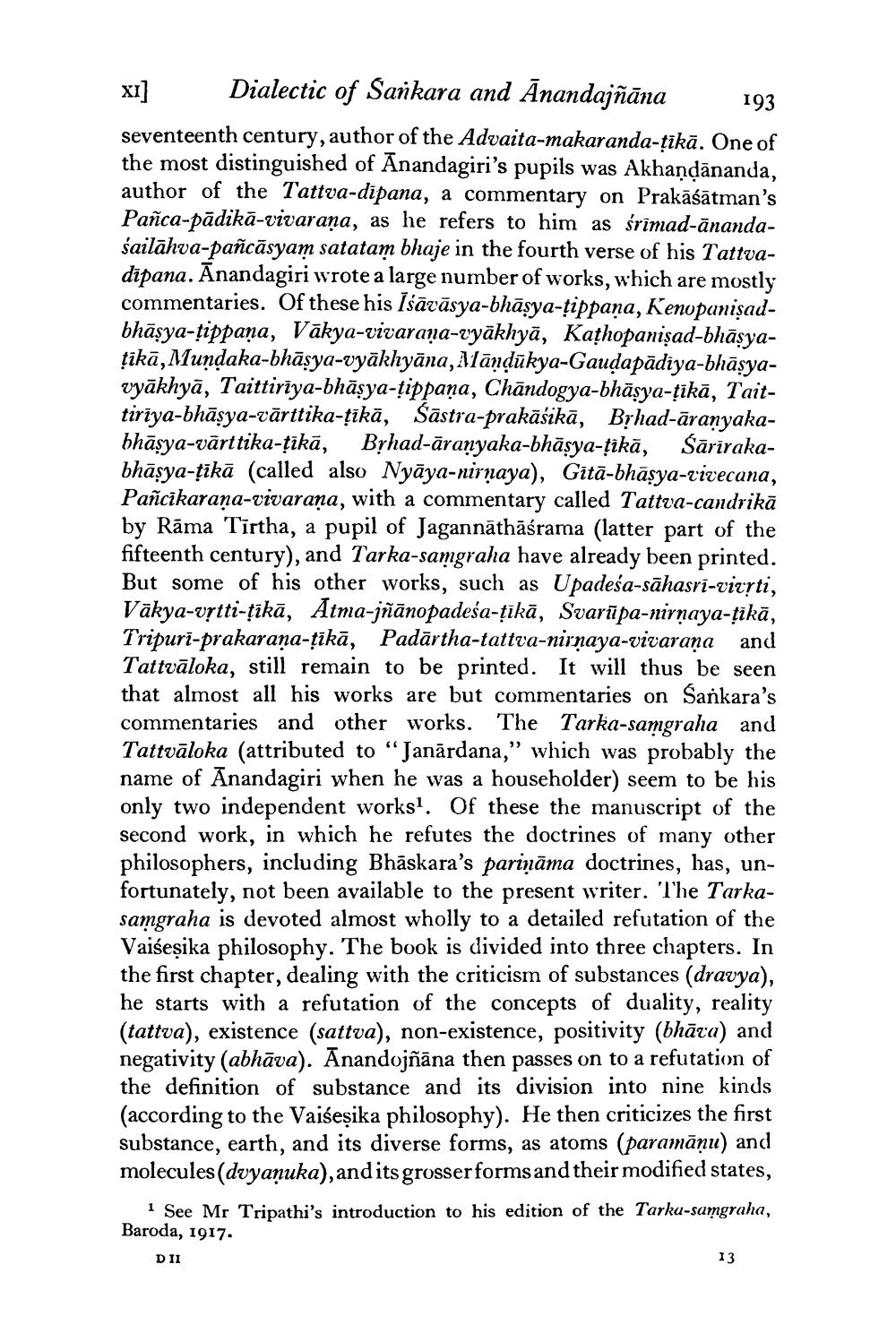________________
xı] Dialectic of Sankara and Ānandajñāna
193 seventeenth century, author of the Advaita-makaranda-tīkā. One of the most distinguished of Anandagiri's pupils was Akhandānanda, author of the Tattva-dipana, a commentary on Prakāśātman's Pañca-pädikā-vivarana, as he refers to him as śrimad-anandaśailāhva-pañcāsyam satatam bhaje in the fourth verse of his Tattvadipana. Anandagiri wrote a large number of works, which are mostly commentaries. Of these his Išāvāsya-bhāşya-țippana, Kenopunişadbhāșya-țippaņa, Vākya-vivarana-vyākhyā, Kathopanışad-bhāsyațīkā,Mundaka-bhāsya-vyākhyāna, Nlāndūkya-Gaudapādiya-bhāsyavyākhyā, Taittirīya-bhāşya-țippaņa, Chāndogya-bhāsya-ţikā, Taittirīya-bhāsya-vārttika-țīkā, Šāstra-prakāśikā, Brhad-āranyakabhāsya-vārttika-țīkā, Brhad-āranyaka-bhāsya-ţikā, Sārirakabhāşya-țīkā (called also Nyāya-nirnaya), Gitā-bhāsya-rivecana, Pañcikarana-vivaraṇa, with a commentary called Tattva-candrikā by Rāma Tīrtha, a pupil of Jagannāthāśrama (latter part of the fifteenth century), and Tarka-samgraha have already been printed. But some of his other works, such as Upadeśa-sāhasri-virrti, Vākya-vrtti-țīkā, Atma-jñānopadeśa-ţikā, Svarūpa-nirnaya-ţikā, Tripurī-prakaraṇa-ţikā, Padārtha-tattva-nirnaya-vivarana and Tattvāloka, still remain to be printed. It will thus be seen that almost all his works are but commentaries on Sankara's commentaries and other works. The Tarka-samgraha and Tattvāloka (attributed to "Janārdana," which was probably the name of Anandagiri when he was a householder) seem to be his only two independent works!. Of these the manuscript of the second work, in which he refutes the doctrines of many other philosophers, including Bhāskara's pariņāma doctrines, has, unfortunately, not been available to the present writer. The Tarkasamgraha is devoted almost wholly to a detailed refutation of the Vaiseșika philosophy. The book is divided into three chapters. In the first chapter, dealing with the criticism of substances (dravya), he starts with a refutation of the concepts of duality, reality (tattva), existence (sattva), non-existence, positivity (bhāra) and negativity (abhāva). Anandojñāna then passes on to a refutation of the definition of substance and its division into nine kinds (according to the Vaiseșika philosophy). He then criticizes the first substance, earth, and its diverse forms, as atoms (paramāņu) and molecules (dvyanuka), and its grosser forms and their modified states,
See Mr Tripathi's introduction to his edition of the Tarku-samgraha, Baroda, 1917.
DII
13




